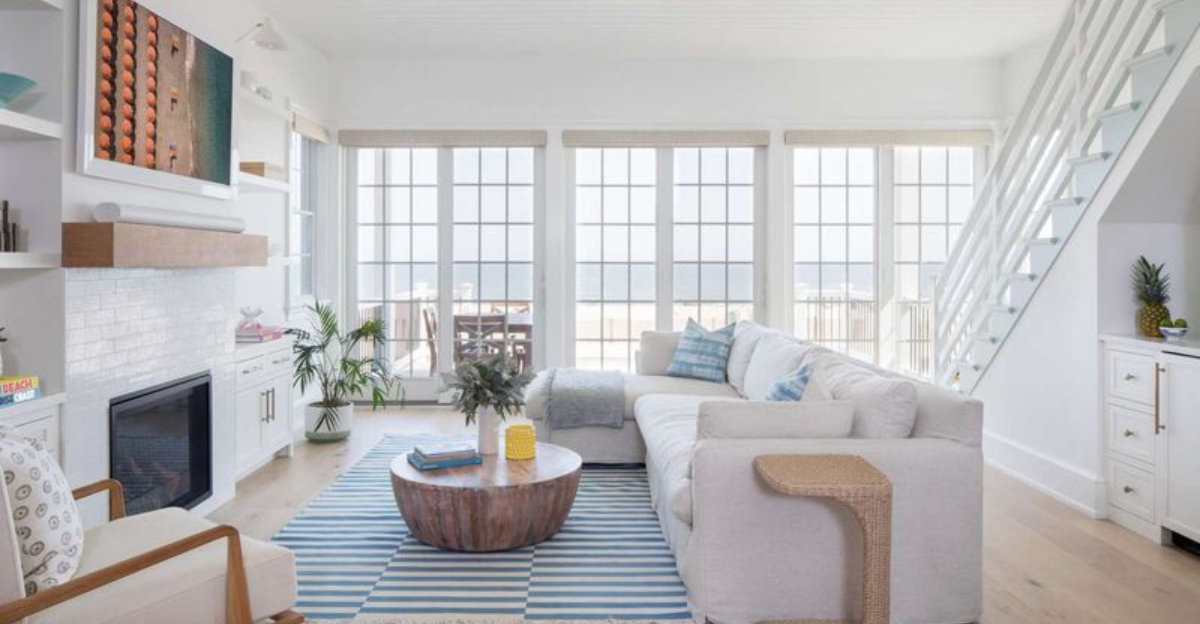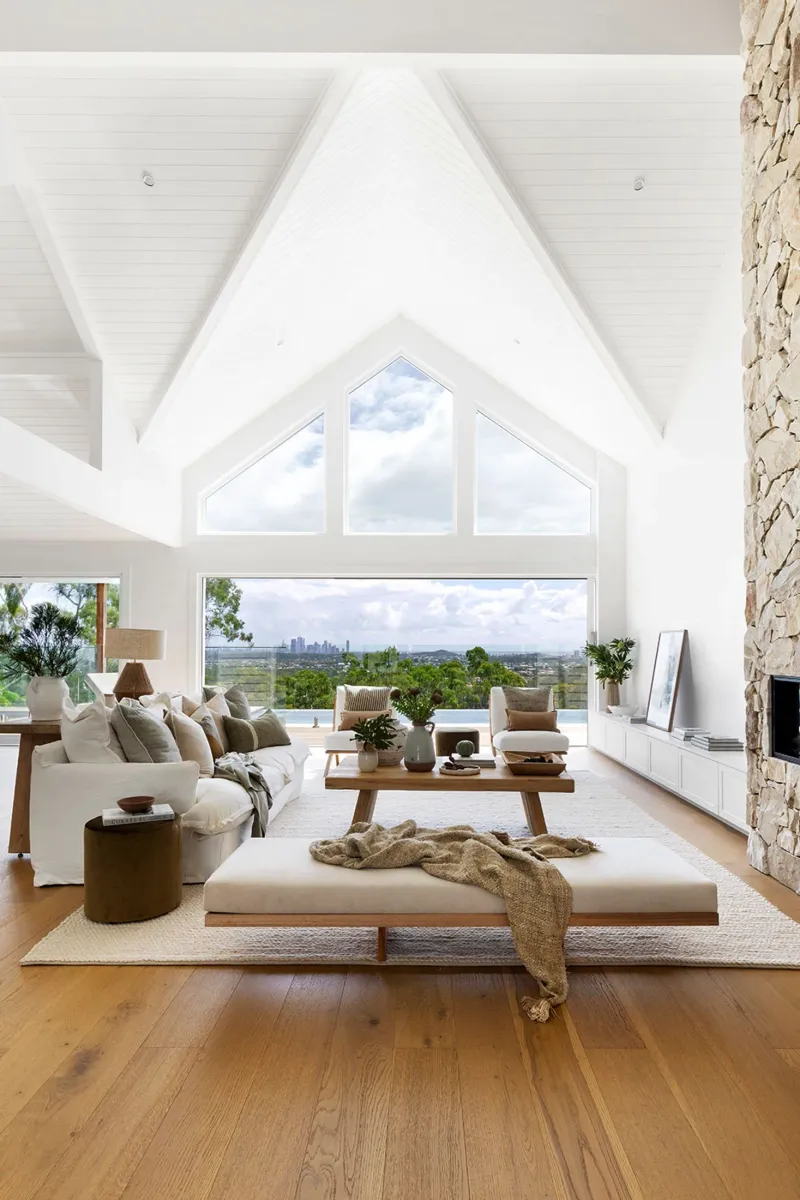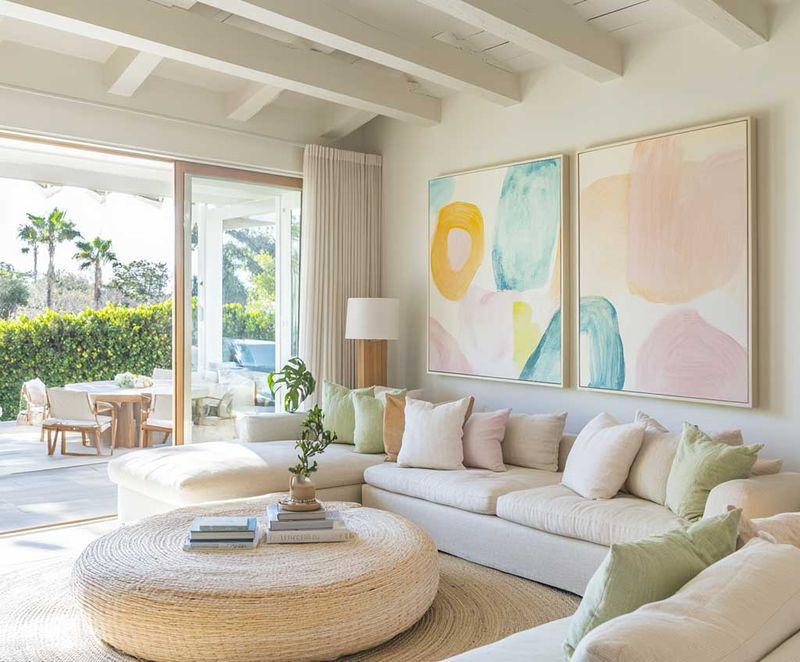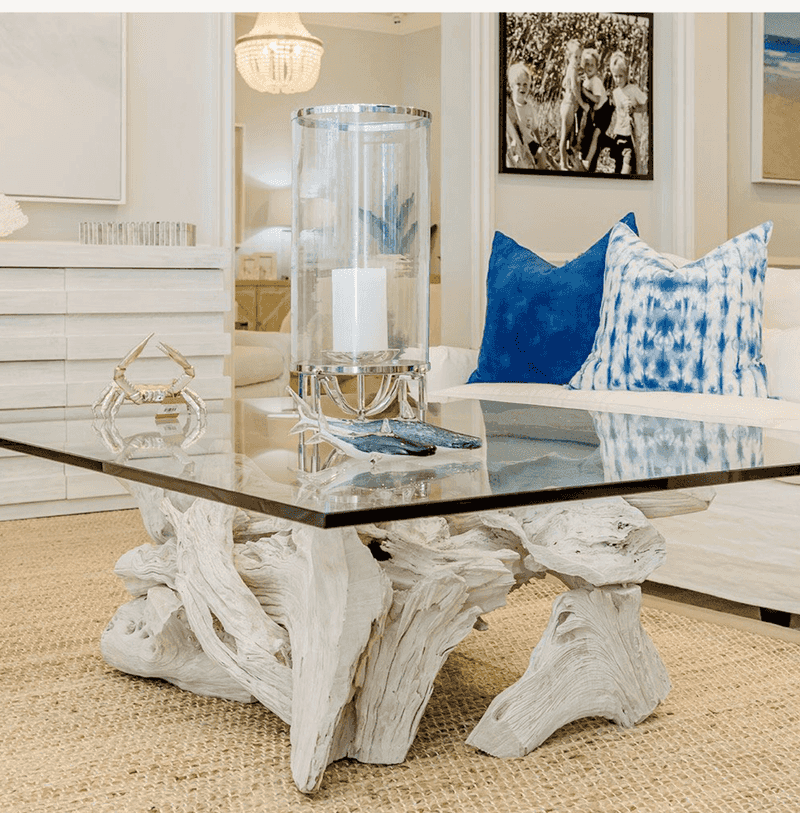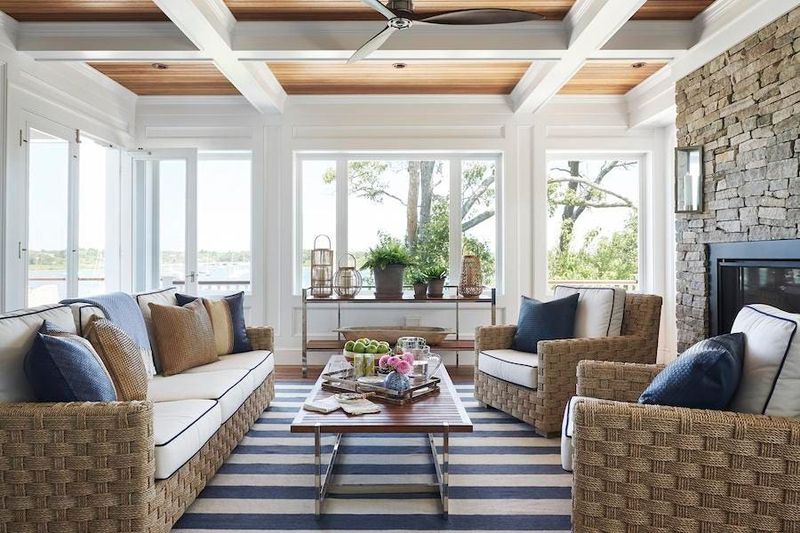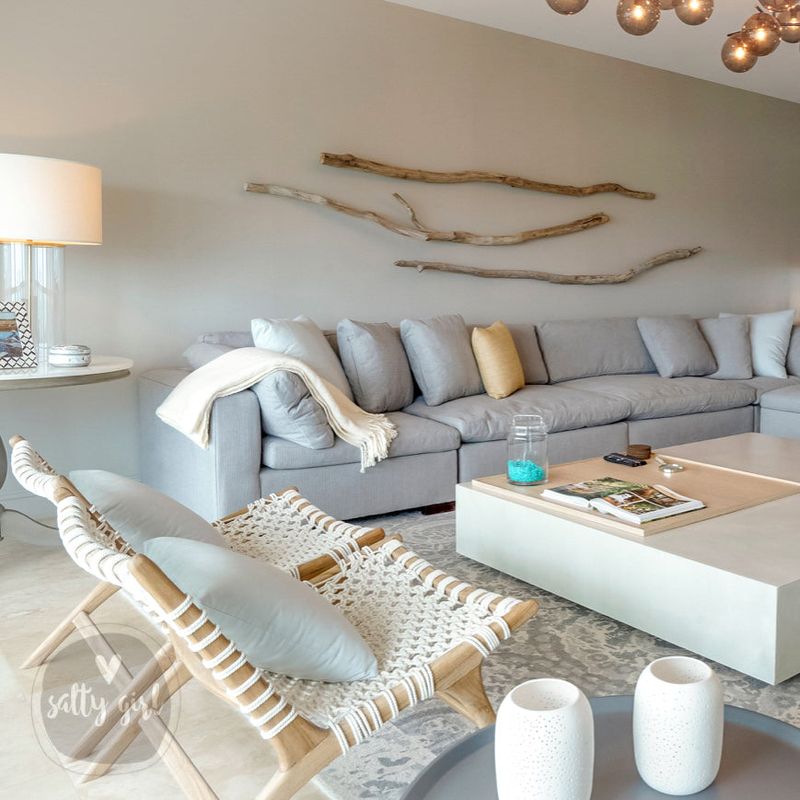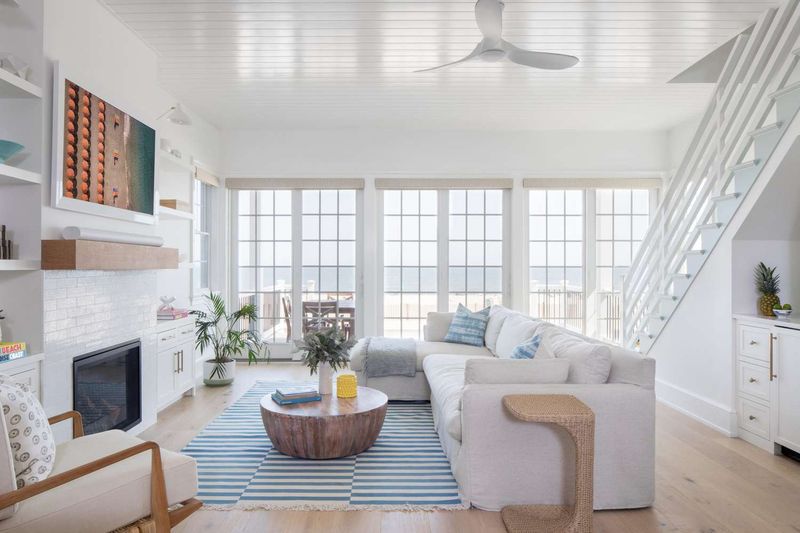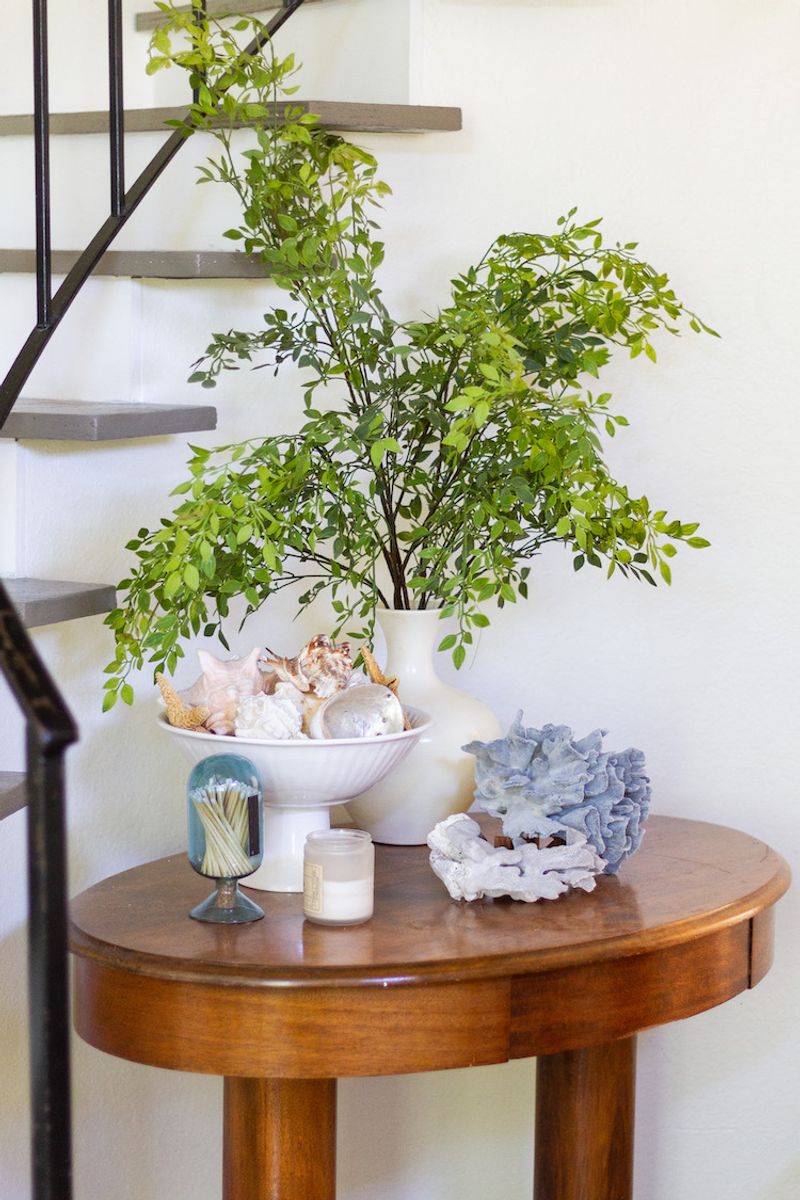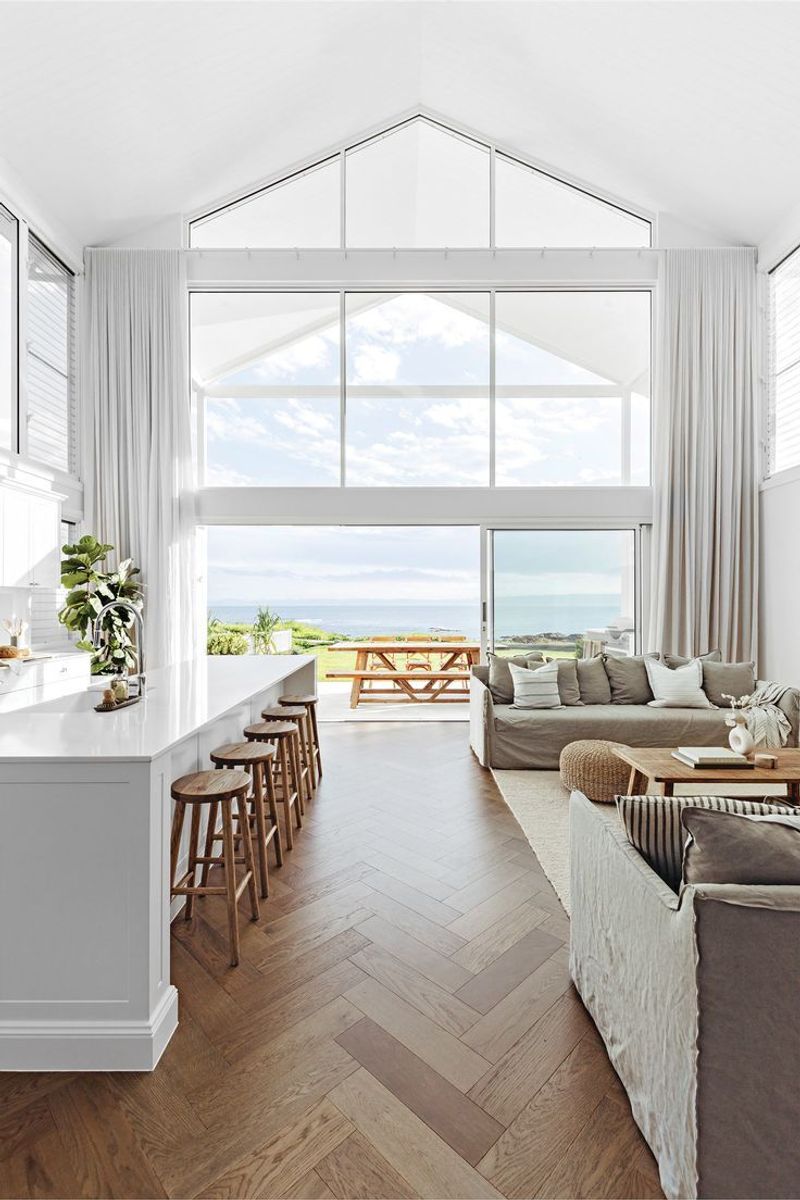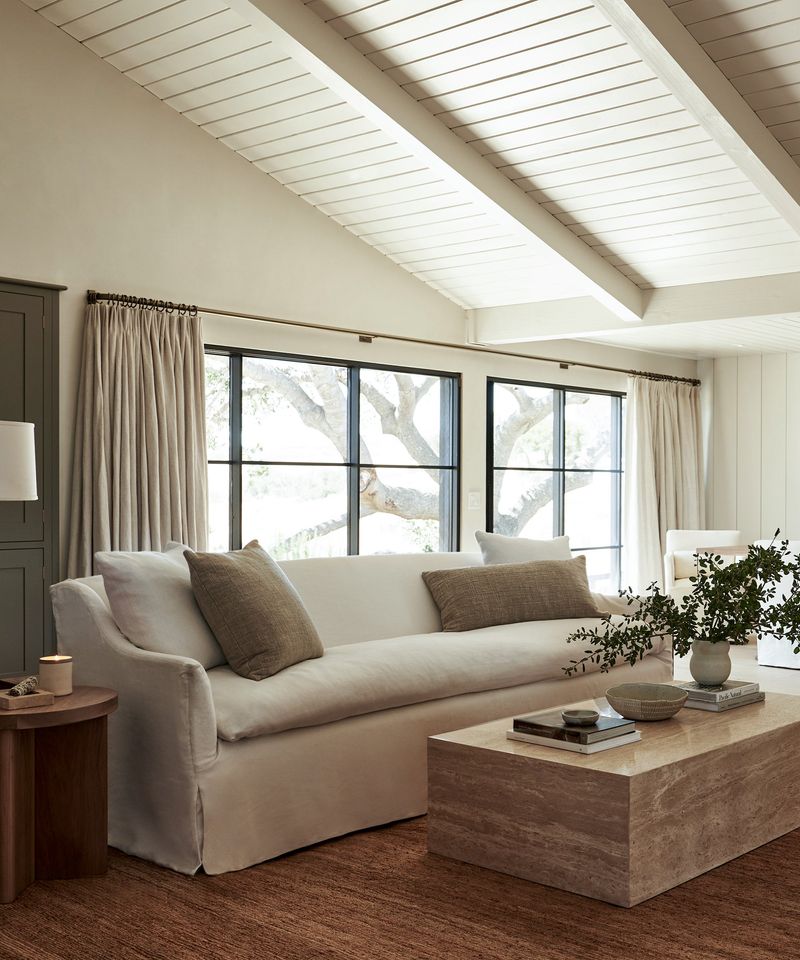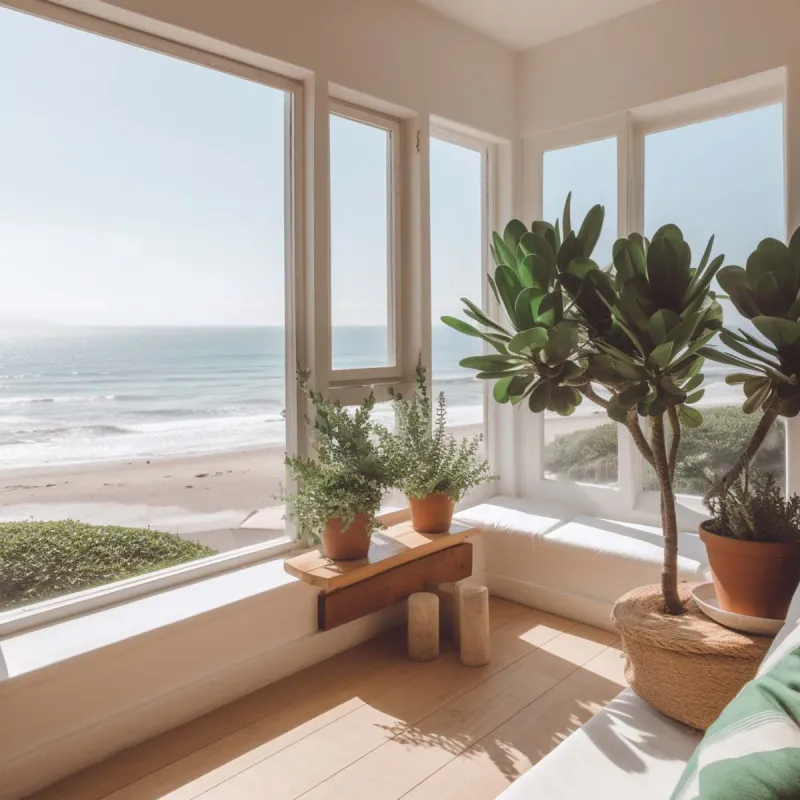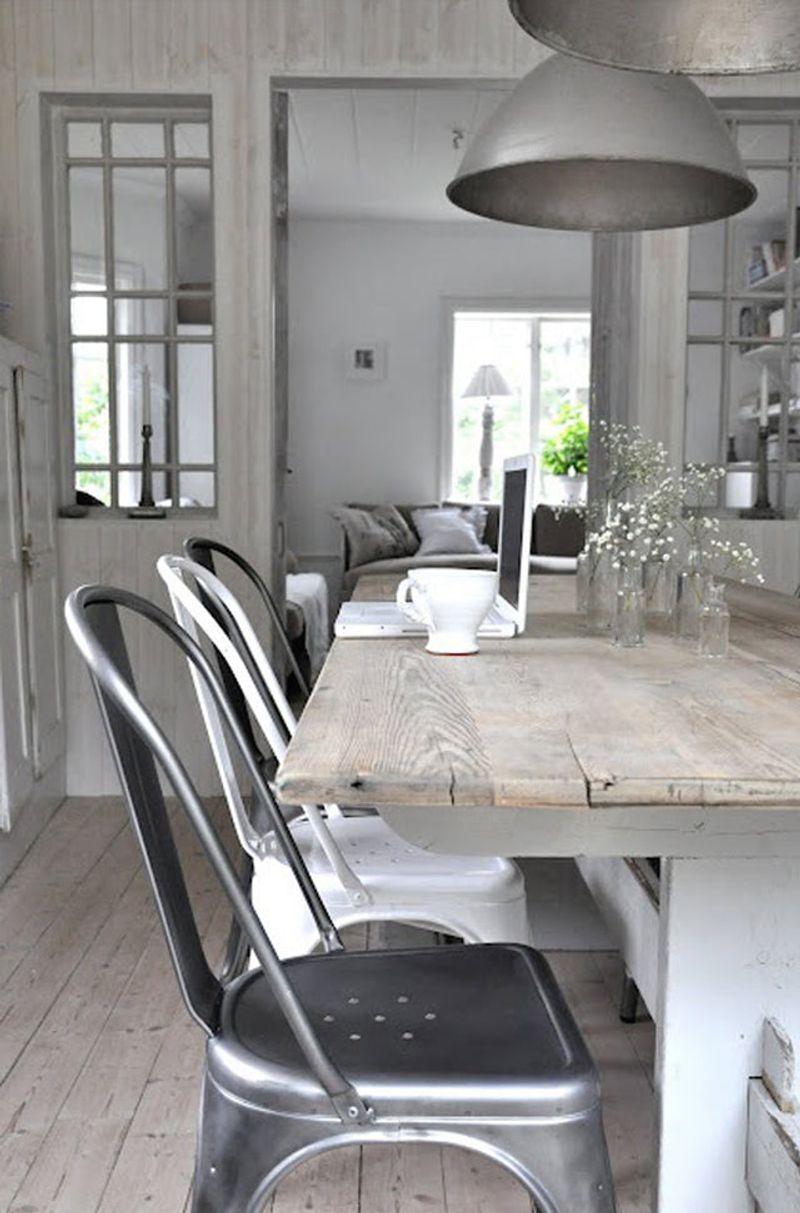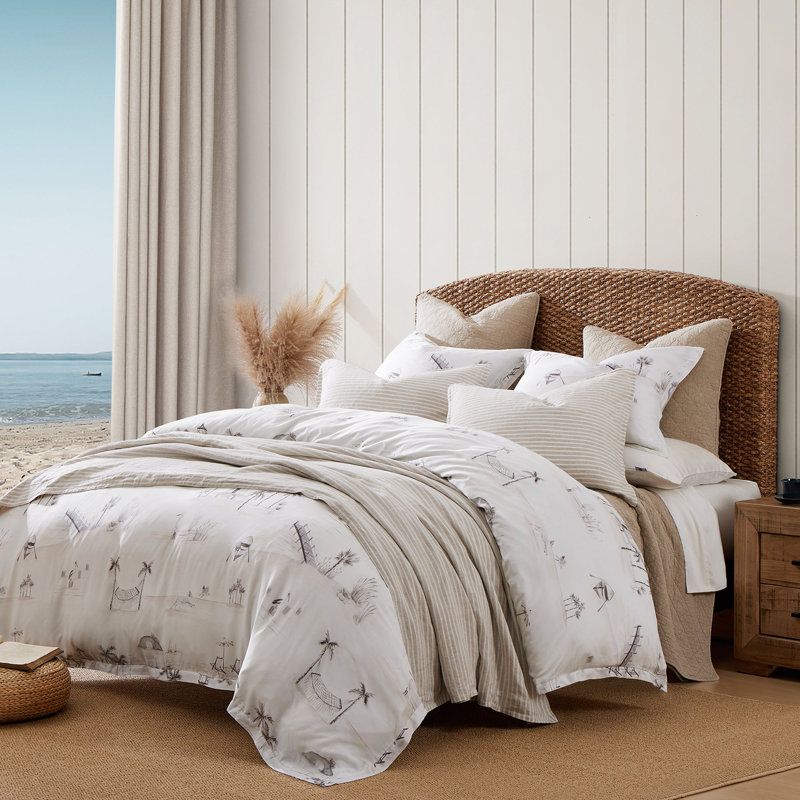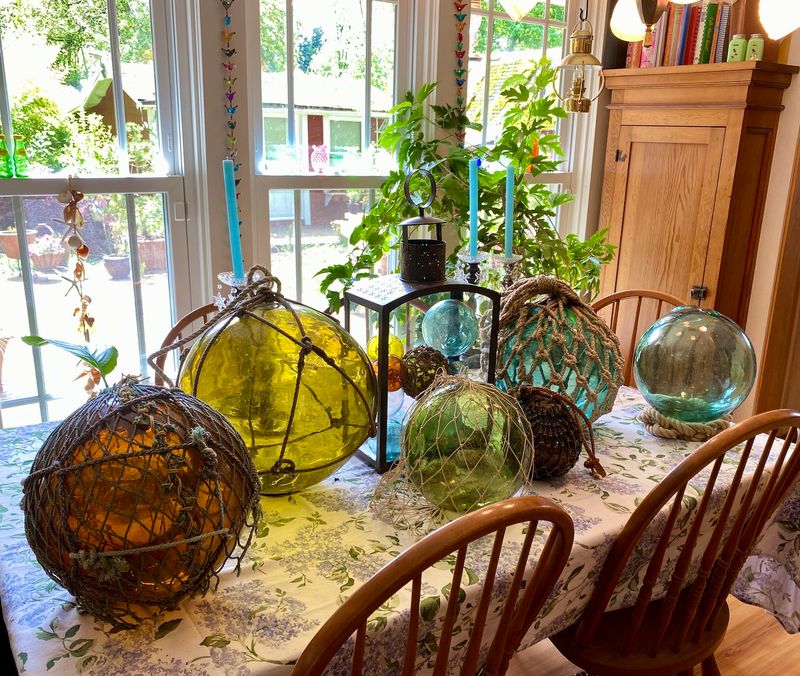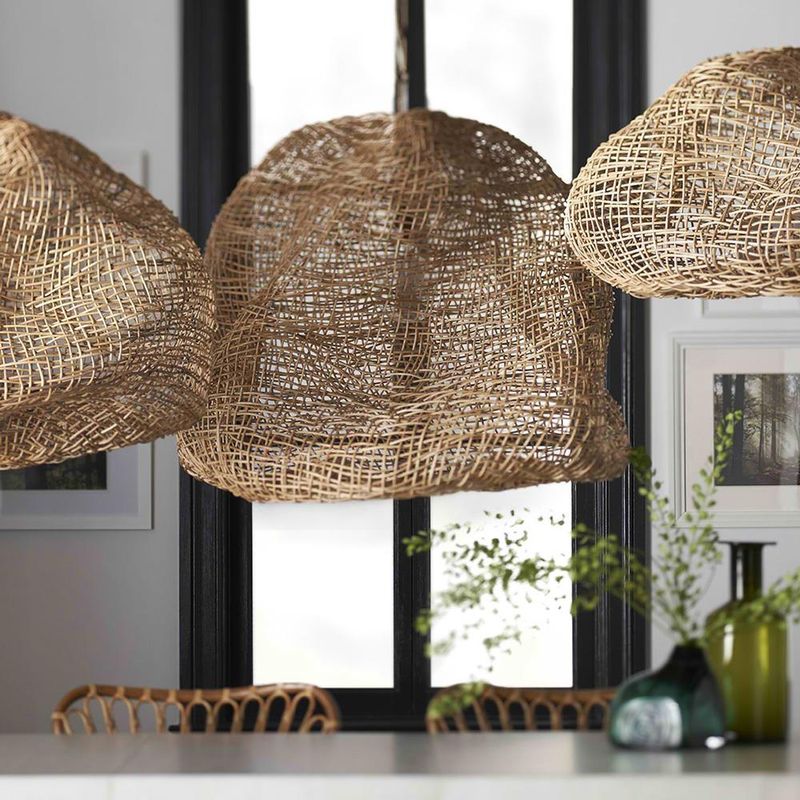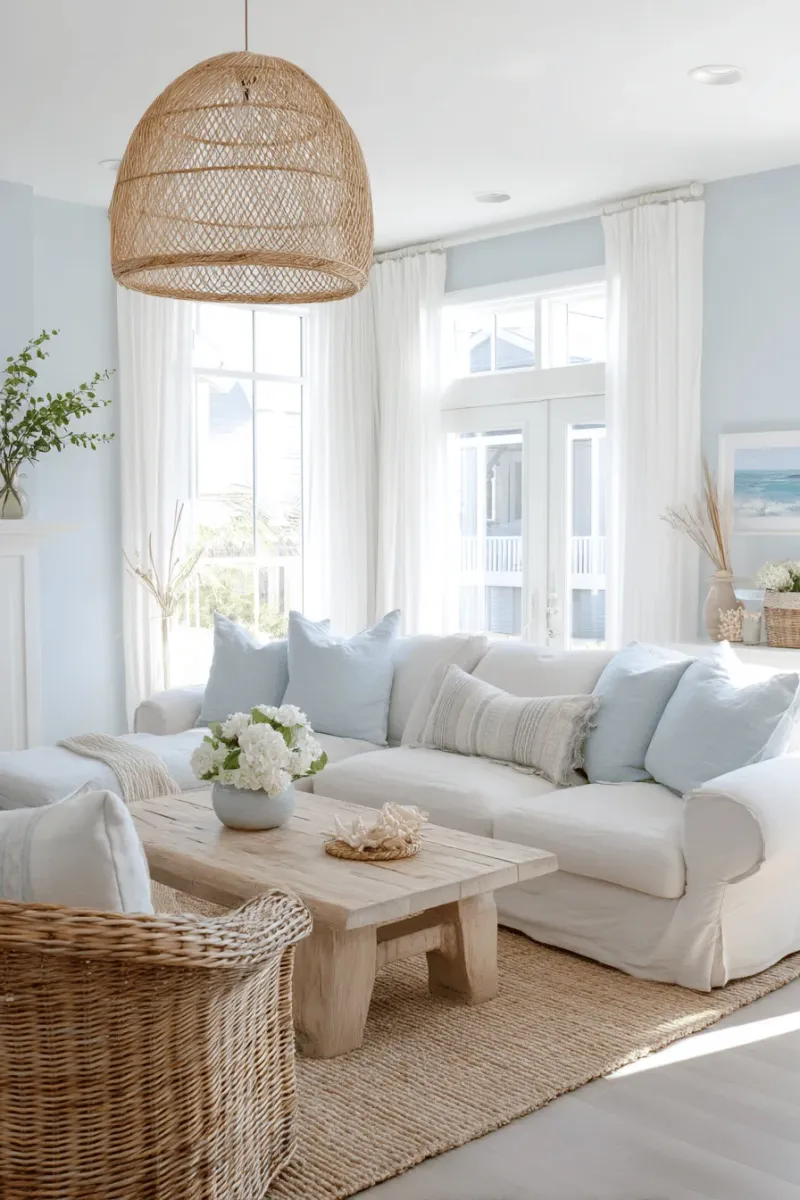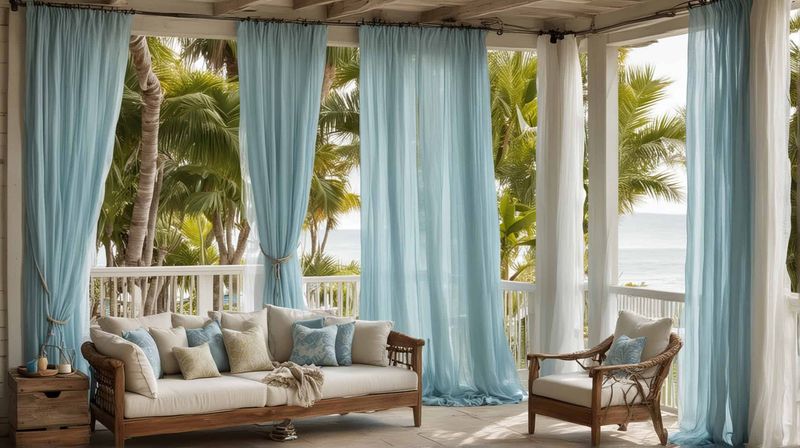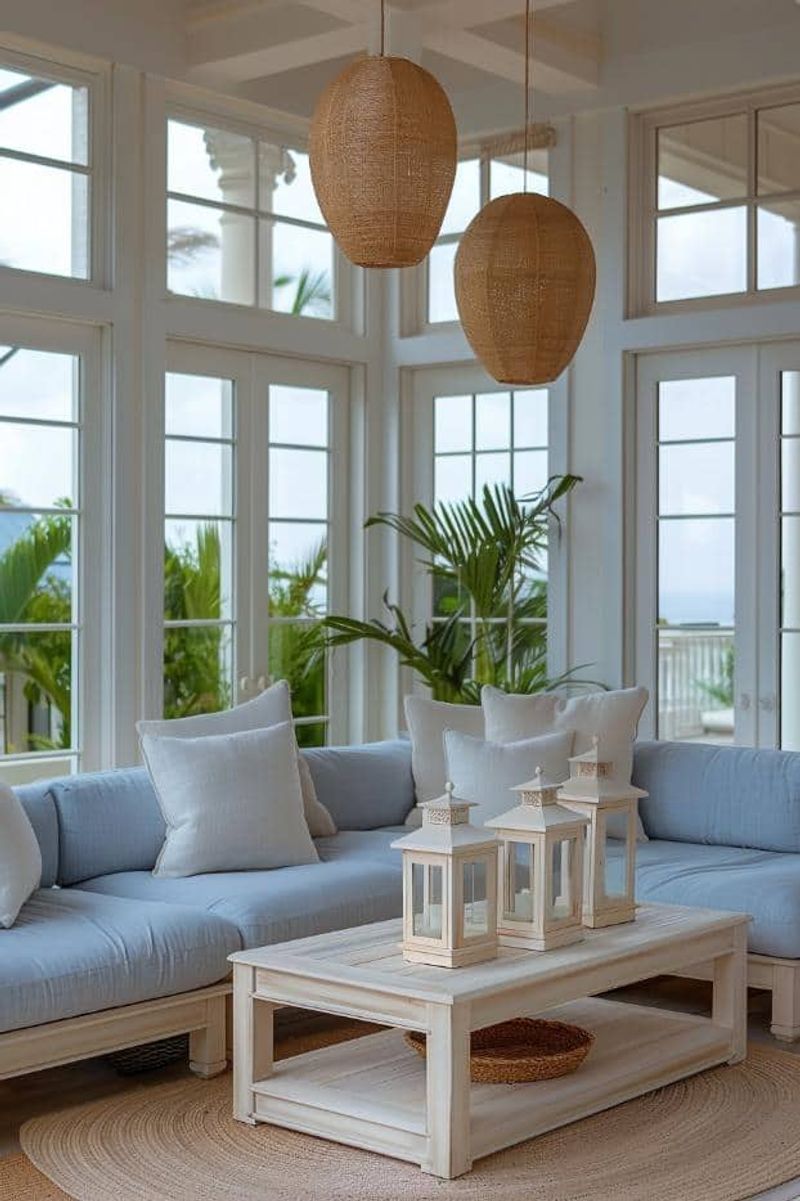Decorating a beach house can be a delicate balance between coastal charm and tacky tourist trap vibes.
I’ve spent years perfecting my approach to seaside spaces that feel sophisticated rather than souvenir-shop inspired.
These rules help create a breezy, elegant beach retreat that celebrates coastal living without resorting to plastic seagulls and ‘Life’s a Beach‘ signs.
1. Stick to a Neutral Base Palette
These timeless shades create a canvas that breathes and expands your space.
When selecting paint, I always opt for whites with subtle warm undertones that mimic the color of sand. This approach allows colorful accents to pop without overwhelming the senses.
2. Layer Soft Blues and Seafoam Greens
After establishing my neutral foundation, I carefully introduce colors that echo the ocean. The key word here is ‘soft’ – think watercolor washes rather than saturated statements.
Throughout my home, gentle aquas and misty greens appear in textiles and accessories, never screaming ‘theme’ but whispering ‘seaside.’ These hues shift beautifully with changing daylight, just like the water outside.
3. Embrace Natural Materials
Whenever I’m selecting furniture or accents, I gravitate toward items that could have washed ashore. Rattan chairs, jute rugs, and weathered wood bring authentic coastal texture without trying too hard.
For my coffee table, I chose a chunky piece made from reclaimed boat wood. Its imperfections tell stories of saltwater adventures. Natural materials age gracefully in beach environments and connect indoor spaces with the landscape beyond.
4. Skip the Nautical Clichés
You won’t find anchors, life preservers, or sailor’s rope in my beach house. While charming in small doses, these motifs quickly venture into theme-park territory when overused.
Instead of literal interpretations, I focus on the essence of coastal living – light, texture, and views. My friends often comment on how my space feels beachy without a single anchor in sight! Subtlety is the secret ingredient for sophisticated seaside style.
5. Incorporate Driftwood Thoughtfully
Rather than cluttering shelves with tiny driftwood trinkets, I select one or two substantial pieces that serve as natural sculptures. My favorite is a gracefully curved branch that spans nearly three feet across my dining room wall.
Finding balance is crucial – too much driftwood feels contrived, but the right piece adds organic elegance. I love how these weathered treasures bring the story of the shore indoors without spelling it out in neon letters.
6. Keep Decor Light and Airy
Heavy, dark furniture feels out of place beside the sea. My rule of thumb: if it would look appropriate in a hunting lodge, it doesn’t belong in my beach house.
Floating shelves instead of bulky bookcases, leggy furniture that shows floor space, and glass-topped tables all contribute to my breezy aesthetic. When selecting pieces, I always ask myself: “Does this let light flow through the space?” If not, it stays in the store.
7. Limit Shell Accents
While completely avoiding shells would be missing an opportunity, restraint transforms them from tourist trap to tasteful. I display just one oversized conch in a simple glass bowl on my coffee table.
Looking beyond the obvious, I’ve incorporated subtle shell textures in unexpected places – like my bathroom sconces with capiz shell shades. Remember that quality trumps quantity every time when decorating with oceanic elements.
8. Prioritize Indoor-Outdoor Flow
Windows without heavy treatments, sliding doors that disappear into walls, and furniture arrangements that direct the eye outward – these are my non-negotiables for beach house design.
During renovations, I replaced standard windows with floor-to-ceiling glass wherever possible. Why create artificial focal points when nature provides the ultimate masterpiece? My design choices always defer to the view, making the ocean or dunes the star of every room.
9. Select Linen and Cotton Fabrics
Formal fabrics like velvet or silk feel jarringly out of place at the shore. My upholstery choices center around washable linens and cottons that embrace their natural wrinkles rather than fighting them.
The slouchy linen slipcover on my sofa practically begs you to sit down with sandy legs. These breathable natural fibers stay cool even in summer heat and develop beautiful character with age – much like the beach house itself.
10. Add Plants for Freshness
Greenery breathes life into beach interiors and prevents that museum-like quality that plagues so many vacation homes. Salt-tolerant varieties like succulents and palms thrive in coastal conditions without demanding constant attention.
My fiddle leaf fig makes a dramatic statement against white walls, while small potted succulents add color to tabletops. Even when I’m away, these hardy plants maintain the feeling that someone lives in and loves this space.
11. Celebrate Imperfect Textures
Weathered, worn, and wonderfully imperfect surfaces tell stories of sun, salt, and time. Unlike urban spaces that often prize glossy perfection, my beach house embraces patina.
The dining table I rescued from a barn has deep grooves and faded patches that would be flaws elsewhere but feel just right here. When shopping, I actively seek pieces with character marks rather than factory-fresh finishes.
12. Choose Soft, Organic Patterns
Forget rigid stripes and perfect geometrics – nature rarely creates straight lines. For textiles and rugs, I gravitate toward patterns that mimic natural formations: rippling water, windswept sand, or cloudy skies.
My bedroom features a duvet with a watercolor-like pattern in soft blues that recalls tidal pools. These organic designs feel inherently coastal without resorting to obvious motifs like anchors or seashells.
13. Opt for Vintage Over Novelty
Genuine maritime artifacts carry history that reproduction “coastal” decor can never match. Haunting antique shops in seaside towns has yielded treasures like my vintage glass fishing floats and an authentic ship’s barometer.
These pieces spark conversations and connect my home to coastal heritage in meaningful ways. Unlike mass-produced beach-themed items, vintage finds have stories to tell and bring soul to spaces.
14. Use Mirrors to Amplify Light
Coastal light is precious – why not multiply it? Strategically placed mirrors bounce sunshine throughout my rooms, creating that luminous quality unique to seaside spaces.
My favorite trick involves a large round mirror positioned opposite the ocean-facing windows. It captures not just light but also reflections of the water, essentially doubling my view. The frames I choose are simple – often weathered wood or thin metal that doesn’t compete with the reflection.
15. Layer Woven Textures
Baskets, woven pendants, and macramé wall hangings bring essential warmth to spaces that might otherwise feel stark. Unlike heavy fabrics, these airy elements add dimension without weighing rooms down.
Above my dining table hangs a pendant light crafted from woven seagrass. Its organic silhouette casts fascinating shadow patterns across the walls at night. These natural fibers connect indoor spaces with the textures of dunes and beach grasses outside.
16. Invest in Relaxed Furniture
Formal, structured furniture has no place at the beach. My living room centers around deep-seated sofas with washable slipcovers that practically beg you to put your feet up.
Comfort reigns supreme in every choice – from the oversized reading chair by the window to the cushioned window seat perfect for afternoon naps. Beach houses should feel like an exhale, with furniture that supports relaxation rather than standing on ceremony.
17. Hang Sheer Window Treatments
Heavy drapes would be criminal in a space blessed with ocean light. Instead, I opt for whisper-thin linen or cotton panels that filter sunshine without blocking it.
When the afternoon breeze kicks up, these gauzy curtains dance and billow, bringing movement indoors. The effect mimics sailing boat sails and creates a mesmerizing, ever-changing element in the room.
18. Practice Minimalist Styling
Beach houses shine brightest when surfaces aren’t cluttered with knickknacks. My coffee table holds just three elements: a large art book, a simple candle, and that single perfect shell I mentioned earlier.
Restraint prevents the space from feeling like a souvenir shop. Each item earns its place through beauty, function, or meaningful connection to the location. This edited approach keeps the focus on architecture, views, and quality materials.

